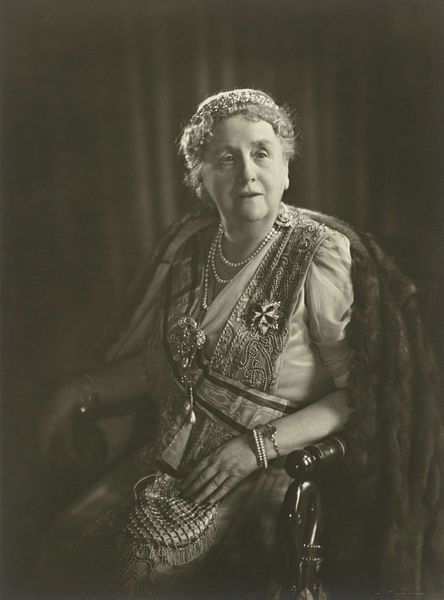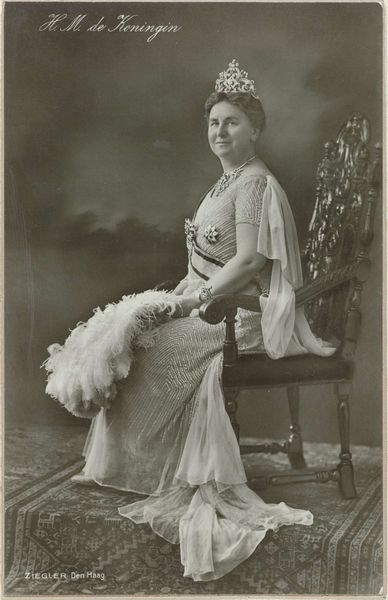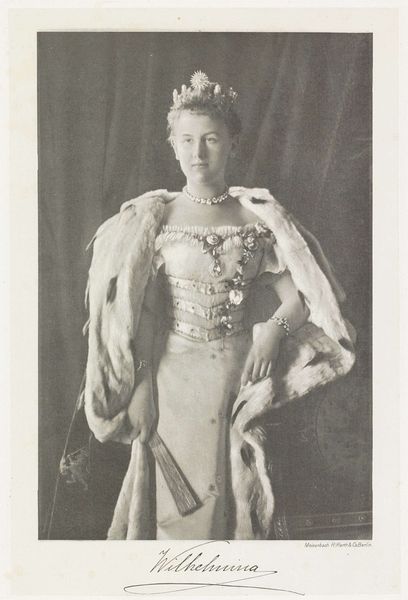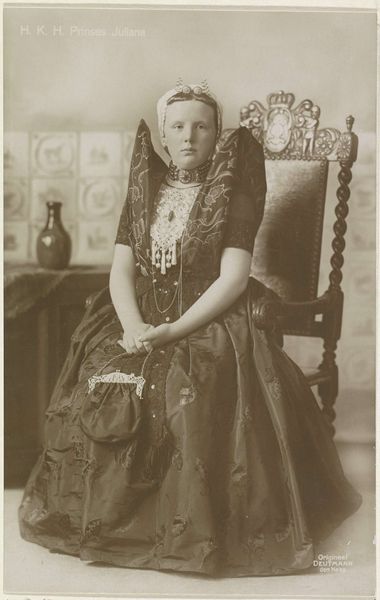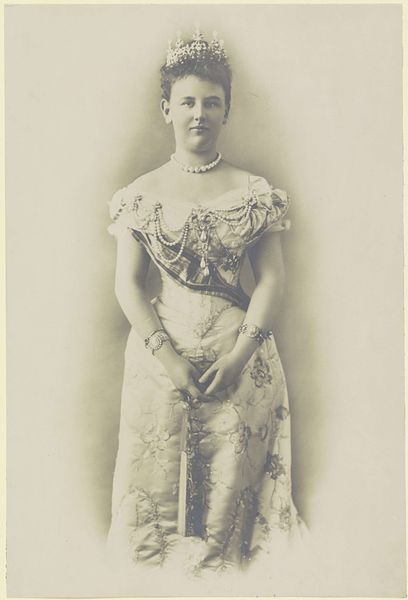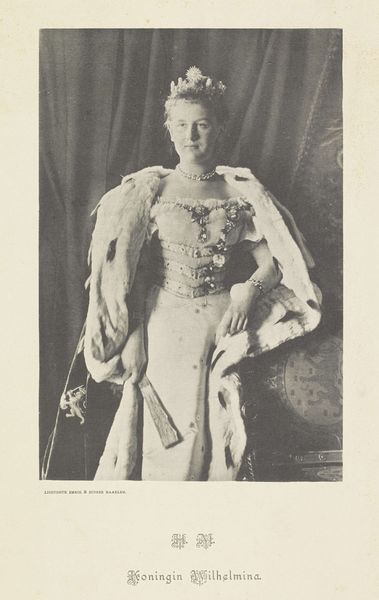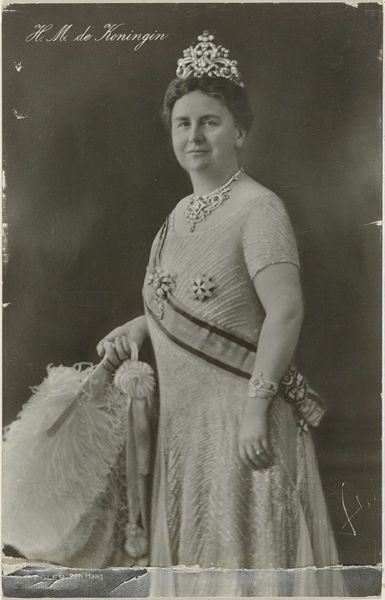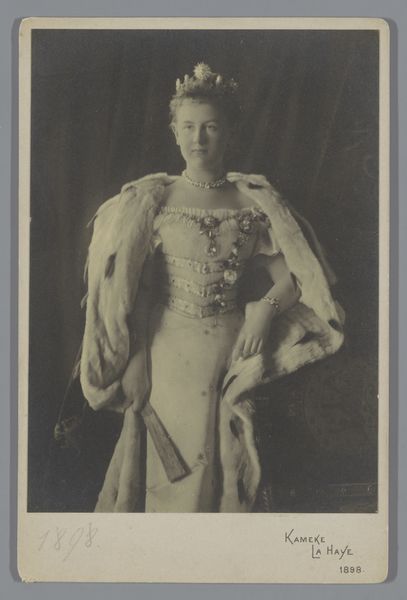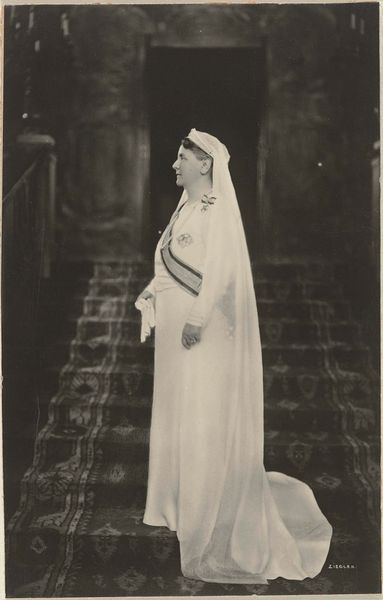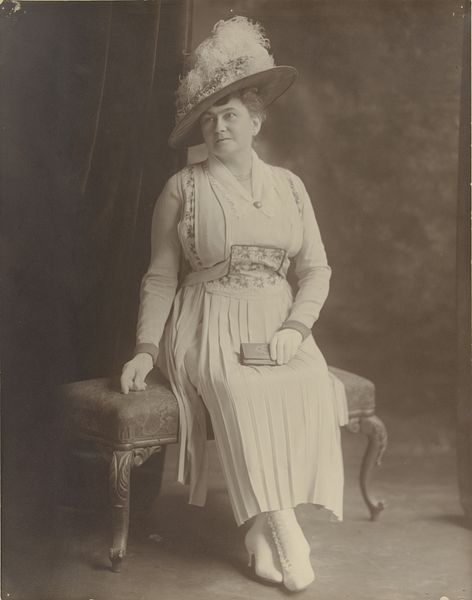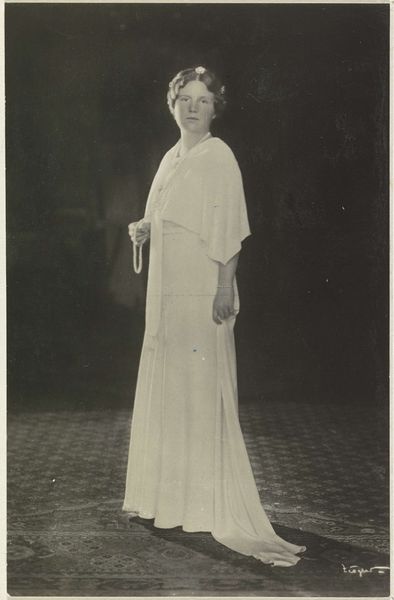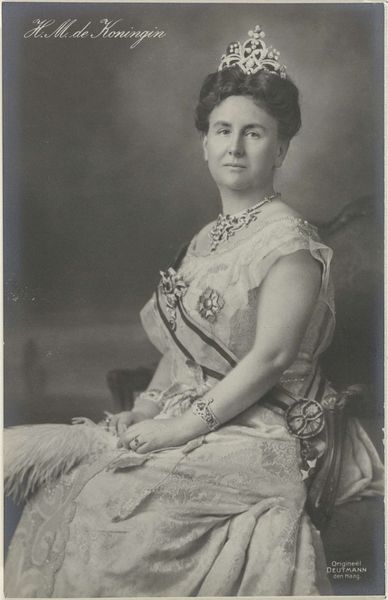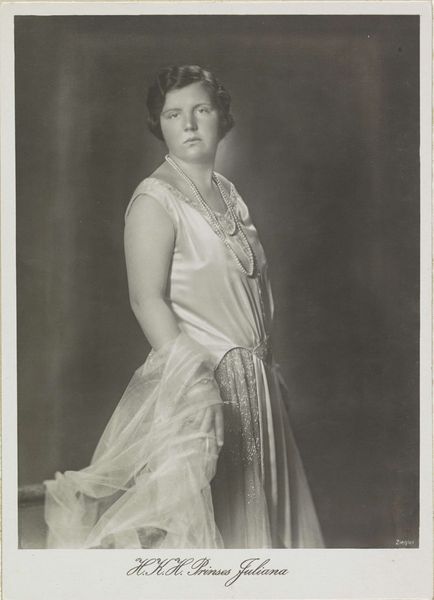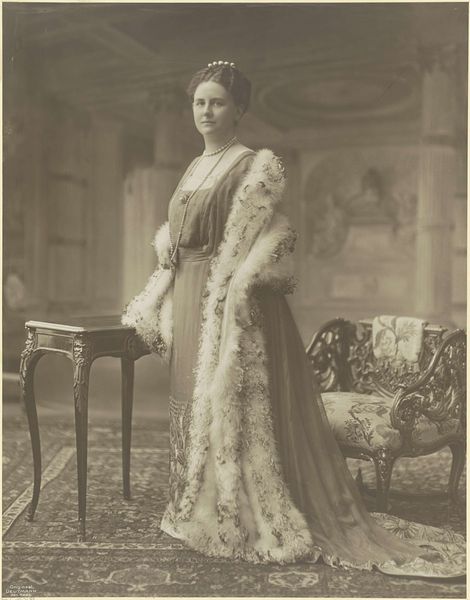
photography, photomontage, gelatin-silver-print
#
portrait
#
archive photography
#
photography
#
historical photography
#
historical fashion
#
photomontage
#
gelatin-silver-print
#
history-painting
Dimensions: height 18 cm, width 24 cm
Copyright: Rijks Museum: Open Domain
Curator: Here we have a portrait of Queen Wilhelmina, photographed by Atelier Merkelbach in 1948. The medium is gelatin silver print, with some elements of photomontage present. Editor: Oh, there's an imposing sense of duty in this image! That distant gaze says it all—weight of the crown, historical echoes... the monochrome intensifies it somehow, like a vintage film reel. Curator: Indeed. The composition employs a full-length, formal pose, adhering to conventions of royal portraiture. Note how the verticality, established by the backdrop and her stance, reinforces her stature. The lighting appears carefully managed to accentuate her features while creating depth. Editor: See, all that regalia weighs her down visually. Those opulent decorations across her gown create a tension against what feels like a surprisingly demure purse... Is that even a purse or some ceremonial object I’m not familiar with? Curator: It functions both as symbolic regalia and sartorial element; let's call it an accoutrement. Consider how it interlocks with her attire to amplify her symbolic connection with governance and national identity in the aftermath of the Second World War. The image participates within the narrative construction around European royalty, which, in this period, serves to reestablish a sense of continuity. Editor: Ah, I get it now—continuity... The '40s felt like yesterday and another lifetime simultaneously, didn’t they? Maybe I read some vulnerability into the photo that’s really her stoicism; history books always flatten a life into a job, don’t they? Curator: That very flattening provides the image its power, a sign of her place and an aesthetic experience of the very state it reflects, like gazing at an institution rather than a monarch. The photograph becomes an essay on form and power—repetition of shapes, subtle curves countering rigid lines. Editor: So what looks posed contains so much that’s actually… imposed, you mean? Thanks, I’ll think of that "formal essay" effect next time I want to get swallowed up by history.
Comments
No comments
Be the first to comment and join the conversation on the ultimate creative platform.
